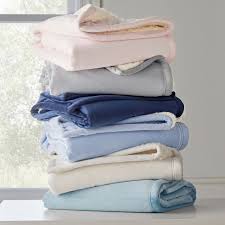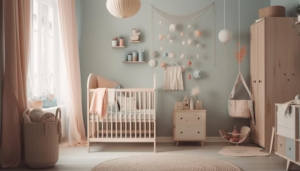Have you ever noticed how a young child clings to a soft, cuddly blanket? That’s no mere coincidence. Baby blankets offer more than just warmth; they serve as a source of emotional comfort that can be incredibly important for a child’s development. I’m going to unpack the ways in which these cozy companions support emotional well-being in youngsters. When it comes to the importance of baby blankets for comfort, let’s make sure we do not cut any corners.
At the core, baby blankets can become ‘attachment objects’—items that a child forms a bond with, providing a sense of security and comfort. Various scientific studies have shown that attachment objects like baby blankets can ease transitions, helping a child navigate new situations and environments with a reliable source of comfort at their side.
In terms of developmental milestones, baby blankets play an unsung role. For one, they can assist in self-soothing, which is a big step for little ones learning to regulate their emotions. The presence of a trusted blanket during times of distress can mediate anxiety and foster a sense of normalcy.
I’ve heard many heartwarming personal stories about the importance of baby blankets. Parents often share tales of their children finding solace in the gentle embrace of their favorite blanket. This isn’t just about a piece of fabric; it’s about the bonds and memories formed during significant growth stages.
Translating this sense of security and affection from a baby blanket into the realm of physical comfort is a natural progression. The right blanket not only pacifies emotions but also brings sensory warmth and physical wellbeing–a topic I’m eager to help you explore in the next section where we talk about the warmth and safety baby blankets provide. Here are some of our favorite baby blankets.
Woven Warmth: The Role of Baby Blankets in Physical Comfort
Don’t overlook the basics when it comes to caring for your little one’s needs. Warmth and safety aren’t just nice to have; they’re essentials. A well-chosen baby blanket can be a silent guardian, offering both throughout your baby’s most vulnerable stage. Now, let’s unpack what makes these cuddly comforts so vital.
Material is king. Your choice could range from natural fibers like cotton and bamboo to warmer options such as fleece or wool. Each has its merits, but the key is to pick a fabric that keeps your baby snug without the risk of overheating. Remember, a baby blanket isn’t just a blanket; it’s a cocoon of comfort tailored to your infant’s delicate skin.
You’ll find that better sleep often begins with the right blanket. It’s not just about the soft touch against their skin; it’s about creating a sleep environment that promotes continuous, undisturbed rest. Research supports that when babies are cozy (but not too hot), they’re more likely to sleep through the night. And honestly, who doesn’t appreciate a good night’s sleep?
Care for baby blankets should rank high on your list. Surprisingly, something as simple as how you wash them can affect their comfort level. A blanket that’s maintained with gentle, baby-safe detergents and softeners will stay soft and comforting for longer. Plus, proper care ensures that the blanket remains a safe haven, free from break-down or wear that could pose risks to tiny toes and fingers.
Fabric Selection: Safety and Comfort Go Hand-In-Hand
 Safety and Comfort Go Hand-In-Hand
Safety and Comfort Go Hand-In-HandWhen it comes to comforting your baby with a blanket, the choice of fabric is not something to be taken lightly. Safety is paramount, as your little one’s skin is far more delicate than your own, and their respiratory systems are still developing.
Now, you might be wondering what materials are considered safe. Let’s start with natural fibers like cotton, bamboo, or wool. These materials are breathable and gentle on the skin, reducing the risk of overheating and irritation.
However, it’s not just about the type of material. Loose threads or overly fluffy textures can pose a risk for young children, potentially leading to serious hazards such as choking or suffocation. That’s why a close inspection for any small detachable parts is crucial before giving a blanket to your baby.
If you’re someone who prioritizes environmental and health consciousness, hypoallergenic options are out there. Organic fabrics, free of harmful chemicals and dyes, offer peace of mind by minimizing the potential for allergic reactions.
It’s also worth mentioning the Global Organic Textile Standard (GOTS) certification. This is one of the leading textile processing standards for organic fibers, including ecological and social criteria, backed by independent certification of the entire textile supply chain.
While the safety and comfort provided by the right fabric are indispensable, remember to keep an eye on any recalls or safety notices from manufacturers and regulatory bodies. It’s just another way to ensure that the snuggle with your little one remains not only soothing but also secure.
Beyond the Crib: The Long-Term Benefits of Comfort Objects

You’re going to find out about how the humble baby blanket often evolves from a simple piece of fabric into a profound source of emotional support. It’s not unusual for these comfort objects to accompany children well into their later years, providing a sense of stability and home no matter where they are.
As infants transition into toddlerhood, the roles of their baby blankets can develop alongside them. These blankets might turn into capes for superheroes during playtime or serve as a picnic blanket for stuffed animal tea parties. Their presence can offer a comforting continuity in the face of life’s changes.
Choose something that resonates with you when selecting a baby blanket, as it might turn into a cherished keepsake. Many adults still hold onto their childhood blankets, imbued with memories and a tangible link to their past. A carefully chosen blanket can endure as a treasured family heirloom, passed down to the next generation. Talking about generation, a good read is that the average age of Grandma has risen to 50.
If you want to keep the magic of baby blankets alive as your child grows, there’s a lot of opportunity for creativity. Repurpose the blanket into a cushion cover for your child’s reading nook or frame a piece of it as a memorable wall art. It goes to show that the significance of these blankets doesn’t just end when your child outgrows the crib; it simply transforms.